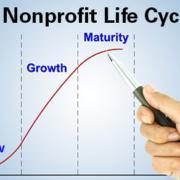Should you file Form SS-8 to ask the IRS to determine a worker’s status?
Classifying workers as independent contractors — rather than employees — can save businesses money and provide other benefits. But the IRS is on the lookout for businesses that do this improperly to avoid taxes and employee benefit obligations.
To find out how the IRS will classify a particular worker, businesses can file optional IRS Form SS-8, “Determination of Worker Status for Purposes of Federal Employment Taxes and Income Tax Withholding.” However, the IRS has a history of reflexively classifying workers as employees, and filing this form may alert the IRS that your business has classification issues — and even inadvertently trigger an employment tax audit.
Contractor vs. employee status
A business enjoys several advantages when it classifies a worker as an independent contractor rather than as an employee. For example, it isn’t required to pay payroll taxes, withhold taxes, pay benefits or comply with most wage and hour laws.
On the downside, if the IRS determines that you’ve improperly classified employees as independent contractors, you can be subject to significant back taxes, interest and penalties. That’s why filing IRS Form SS-8 for an up-front determination may sound appealing.
But because of the risks involved, instead of filing the form, it can be better to simply properly treat independent contractors so they meet the tax code rules. Among other things, this generally includes not controlling how the worker performs his or her duties, ensuring you’re not the worker’s only client, providing Form 1099 and, overall, not treating the worker like an employee.
Be prepared for workers filing the form
Workers seeking determination of their status can also file Form SS-8. Disgruntled independent contractors may do so because they feel entitled to health, retirement and other employee benefits and want to eliminate self-employment tax liabilities.
After a worker files Form SS-8, the IRS sends a letter to the business. It identifies the worker and includes a blank Form SS-8. The business is asked to complete and return it to the IRS, which will render a classification decision. But the Form SS-8 determination process doesn’t constitute an official IRS audit.
Passing IRS muster
If your business properly classifies workers as independent contractors, don’t panic if a worker files a Form SS-8. Contact us before replying to the IRS. With a proper response, you may be able to continue to classify the worker as a contractor. We also can assist you in setting up independent contractor relationships that can pass muster with the IRS.
© 2018












